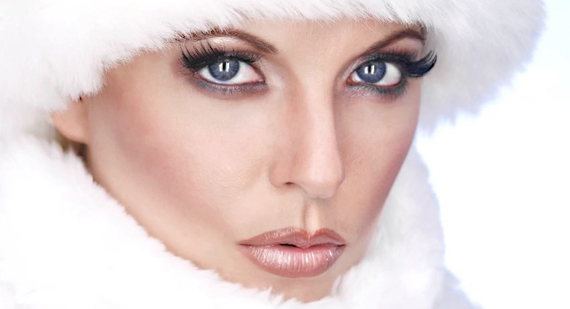There is no doubt about it that collecting an arsenal of studio lighting is a very costly adventure. But, who’s to say you can’t get professional results using light strips that you have built yourself? As Joe Edelman outlines in his two part video series, even those with no carpentry skills can whip up some great lighting at a fraction of the price. Take a look, it’s easier to do than you might think:
To make your own lighting rig you’ll need to purchase some fluorescent light ballasts that hold two bulbs each. These can be found at most hardware stores for around $10. Before installing the lights into the ballasts, use a standard 1 1/2″ wood screw at the end of each ballast and screw into a piece of pre-cut wood. For the top piece of wood, Edelman uses a 2″ x 3″ and on the bottom a 1″ x 2″; the length of each should be slightly larger than the width of your ballast. The photo below illustrates how Edelman has mounted his:
The 2″ x 3″ piece of wood is mounted to the track wheel and then mounted to the track which Edelman had already attached to the ceiling. Here is an example:
For a more portable light strip, you can easily attach the ballasts to a light stand using a couple zip wire ties. Just be sure that they are secure to avoid having to clean up a big mess if they happen to fall from the stand.
In this next video, Edelman gives us some pointers on how to use your new lighting rig.
Using a combination of the track strip lights and a couple strip lights mounted to light stands as a rim light, Edelman is able to get some really great portraits…
The key to avoid the dreaded fluorescent flicker that cheap bulbs are notorious for, Edelman has discovered that all you need to do is shoot at a shutter speed of 1/125 or slower. You’ll probably want to use a tripod if you are using a longer lens, but with the money you have saved on lighting, you can buy yourself a nice one and still have some money left in your wallet.
Like This Article?
Don't Miss The Next One!
Join over 100,000 photographers of all experience levels who receive our free photography tips and articles to stay current:











It’s true that buying your own arsenal of photography lighting can be a costly adventure. I love the idea of making your own lighting strips, why didn’t I think of that? Your instructions are awesome, I’m going to have to try this out this week! I didn’t know that the key to avoid the dreaded fluorescent flicker that cheap bulbs are notorious for, is to shoot at a shutter speed of 1/125 or slower. Thanks for the tip! I always get that fluorescent flicker when i use cheap bulbs, and I’ve been meaning to figure out a way around it!
Lisa | http://starrstreetstudios.com/photos/
good…….
Dear Sir,
My wife Stephanie Mohan is a professional portrait photographer and I am an electrical contractor, doing lighting design and installation. I had some questions about the florescent fixtures you are using for the photography. When you say non flicker it kin of puzzled me. The lamps you are using look to be a T-12 type. This type of lamp does flicker slightly because of the fact that they are driven by a magnetic ballast. These ballasts oscillate at 60 cycles. I would like to go with what might seem to be an even better solution using either T-8 or even brighter T-5 lamps. Both of these are driven by an electronic ballast. There are now also LED tubes. Of course right now they may be a little pricier.
My question is the spectrum. Usually when I light a studio for oil or water color artists, I full or daylight spectrum lamps. Do you know if it matters that I use the T-5 lamps. They are brighter and can be dimmed if needed. In other words, what is the max wattage you use for portraiture?
I think using the food tubes to protect is a good idea. When tubes break they will shower the room with mercury. Not good. Anyway, thanks for any info you can share.
Best Regards,
Sean Mohan
Shining Star Electric
Not only are you a terrific photographer, you are also a terrific actor and voice actor.
Your narration was as professional as that done by any of the name Hollywood character actors for National Geographic or Discovery Channel documentaries.
Thank you for generously sharing both your lighting expertise, and your photographic expertise.
What made the circular catch lights in the model’s eyes in the first sample shot? In the second it’s clear they’re shaped like the light source. Interesting setup, thanks.
Just wondering what kind of bulb? warm, daylight, etc? I shot in flourescent lighting and got bad colorcast. Must not have had camera settings correct. Really liked these two videos.
Good idea and nice exposure. You have a very good control of the light!
Thank you for such and amazing 2 part tutorial… definitively i will be using this setup but portable and now that i now the “secret of the flicker” free photography even more!!!
Thanks!
What a great idea, thank you for the tutorial
Excellent tutorial, thank you for that.